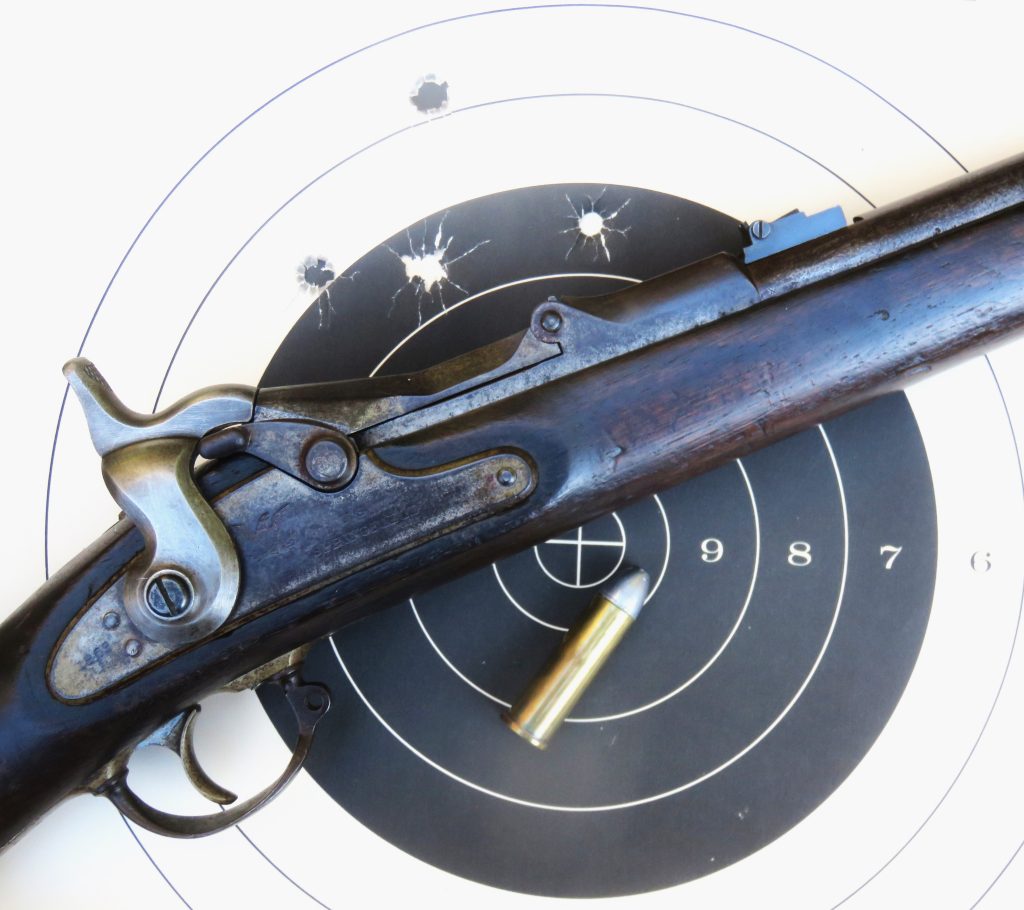
By Mike Nesbitt | Contributing Editor
After trying the 473-grain paper patched bullets in the .50-70 caliber Springfield trapdoor, I certainly wasn’t finished with that rifle.
Like I said while describing the load that was used, that wasn’t what the gun was designed to shoot. Instead, it was what I had on hand for some quick loads for a first try. But shooting with those paper patched bullets turned out to have a very good side effect, because I got caught doing the shooting by another .50-70 Springfield shooter, and he had some suggestions.
Let me fall back just a bit in case you missed or didn’t read that story. The rifle is an 1869 Model of the Springfield “trapdoor” military rifle, with a 32 ½-inch long barrel. Those 473-grain paper patched bullets were too heavy for good shooting because the old .50-70 trapdoors were rifled with a rate of twist at 1 turn in 42 inches.

The standard military load listed a 450-grain bullet over 70 grains of black powder and I’ve heard that even the 450-grain bullets would begin to “tilt” in flight, or keyhole, at extended ranges. Later on, as late as 1916, there was a sporting load by Winchester which used a 425-grain paper patched bullet that was recommended for the .50-70 trapdoors, being surplus and in civilian hands by then. To further reduce the rifle’s chance for giving me a good target, I had loaded the 473-grain bullets over just 60 grains of Swiss 1Fg powder, to “soften” the load for that first try. That reduced the velocity, when compared to a 70-grain loading, and that gave the bullet an even slower rate of rotation, farther away from the best rate of spin for stability. But those loads were good “stepping stones,” like I said, and my intention was to go on from there.
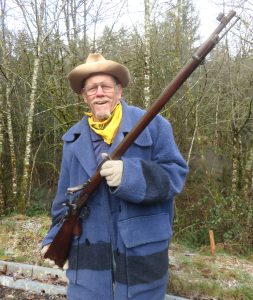
Another .50-70 Springfield fan met me at the range and that was “Loco Jeff” Ritter. (He’s called “Loco Jeff” because he was a locomotive engineer, not just because he’s so crazy.) Jeff offered a bullet mold for me to try which cast a 375-grain .50 caliber slug. Using that bullet, being about 100 grains lighter than the paper patched bullet I had tried, sounded like a good thing to try, so I borrowed it and made some bullets.
That bullet mold was from Buffalo Arms Company and it was “signed” on the side of the blocks with “JIM515375” which identifies the mold maker as well as both the diameter and the bullet’s weight. That bullet was actually made and intended for the .56-.50 Spencer. (If I had one of the new copies of the .56-.50 Spencer rifles, I’d certainly be getting one of those molds.) To use it in the .50-70 would be a very good way to create a lighter load and the bullet should feel right at home in the 1 in 42-inch rate of twist.
“JIM” is Buffalo Arms’ bullet mold maker, Jim Brannon. I met him back in 2015 during my first visit to Buffalo Arms and when Allen Cunniff and I visited more recently, that was only my second time to step into the “BACO” shop. That was right around lunchtime and Jim was sitting at a bench eating a sandwich. He saw me come in through the door and when I got fairly close, he gestured to me with his sandwich-holding hand and said, “You’re that writer-guy.” I thought to myself, “Ah, recognition at last!” but instead of saying that I replied with, “You’re that bullet mold-maker guy…” Which was followed with “How’s it going, Jim?”
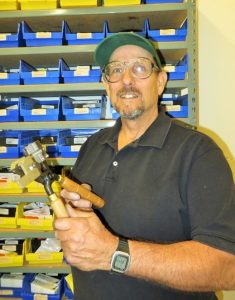
(Remembering Jim’s first name was easy but I will admit how I had to review my old story about that visit to Buffalo Arms to recall his last name. Now that will be much easier to remember. And he does make some very good bullet molds. Take a look at those on the BACO website at www.buffaloarms.com.)
The bullets from the JIM515375 mold were cast with a 30-1 lead-in alloy and they weighed right at 375 grains. Because my largest bullet sizing die is only a .512” diameter, the bullets from the BACO mold were pan lubed in order to leave them at the .515” diameter. Then they were loaded into the .50-70 cases which were primed and charged with powder, just waiting for the bullets.
Because the 473-grain bullets were so slow, being shot with just 60 grains of Swiss 1Fg powder, these 375-grain bullets were loaded over 70 grains of Swiss 1 1/2Fg powder. While the heavier bullets were too slow, chronograph-checked at just 1160 feet per second, the loads with the 375-grain bullets were surprisingly too fast, at 1410 feet per second. I shouldn’t have used so much powder.
My reasoning for saying that is because I was hoping to get a load with a velocity more closely “in agreement” with the old military load with the 450-grain bullets, about 1250 feet per second. That should be the best because the sights on the old trapdoor are generally non-adjustable for the shorter ranges. Yes, there are longer-range leaves that can be stood up, but those are not adjustable either. Later trapdoors, such as the 1873 Models and later, did have some much better sights. But with this rifle, I wanted a load that would be “adjusted” to fit the rifle, not a load that I could adjust the sights for.
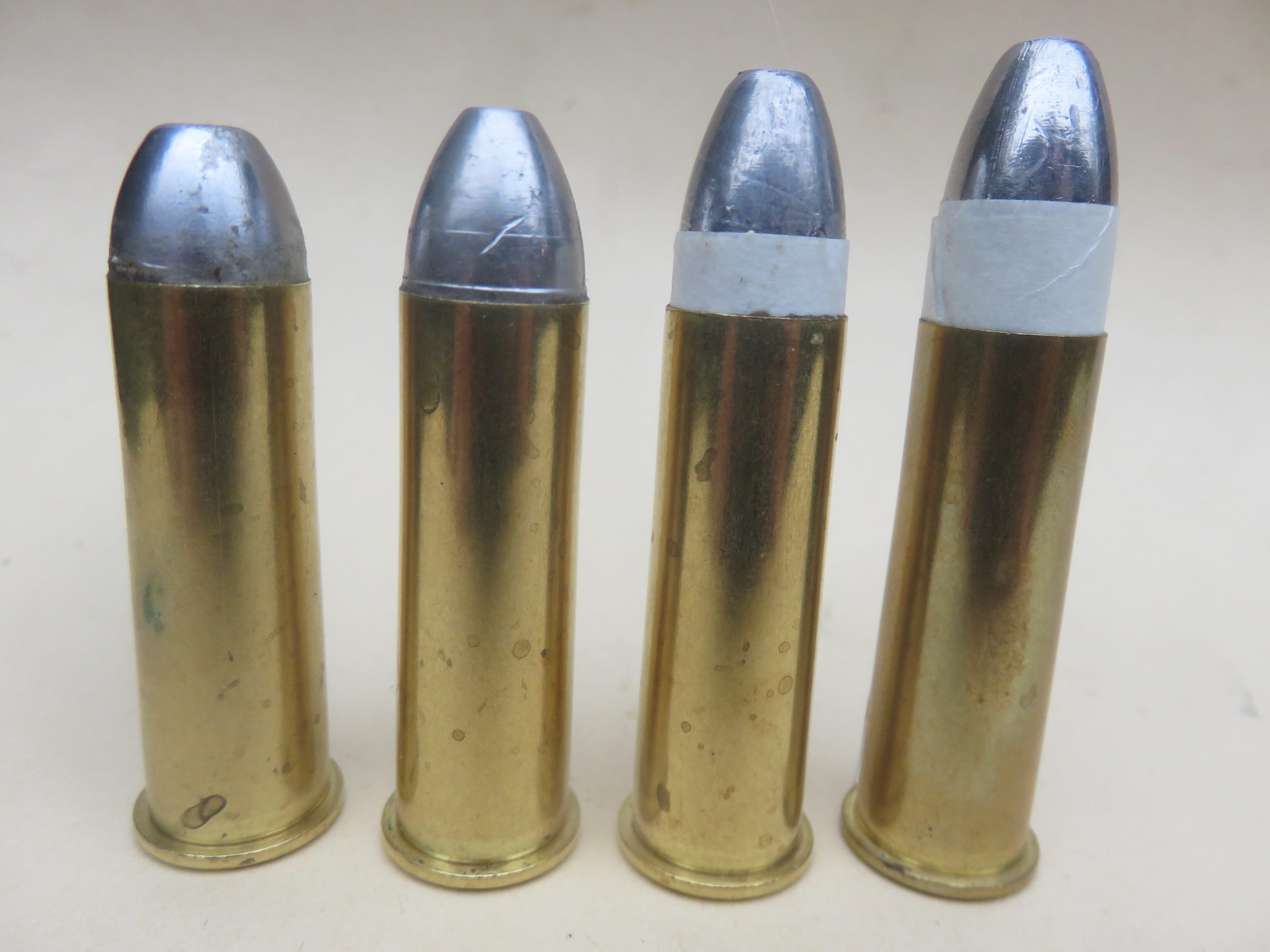
But even though the 375-grain bullets were going faster than what I wanted, they did perform better than the 473-grain paper patched bullets, being more “in tune” with the rifle’s rate of twist in the long barrel. Again, I tried some shots at a bullseye target which was posted at just 25 yards. Because my shots had previously gone to the right, I held the sights at about 8 o’clock on the edge to the black. Four shots were fired which went just a bit high. In other words, if I had held at 6 o’clock on the bottom of the black, those four shots would have printed very nicely, perhaps close to the center. So, I thought using the 375-grain bullets was a very good try, more excellent stepping stones toward getting a better load.
Those 375-grain bullets were intended for use in the .56-.50 Spencer which powered them with 45 grains of black powder. One difference between the .56-.50 and the other Spencer cartridges was that the bullets for the .56-.50 had their lube grooves seated inside the cartridge case while those grooves, and the lube, were exposed on the other cartridges. The standard bullet for the old .56-.50 weighed 350 grains.
While the old Spencer cartridges were mostly rimfire (there were a few centerfire guns made) we can easily guess that this 375-grain bullet from the BACO mold was actually made for the modern replicas of the old Spencer lever actions. The replica Spencer rifles and carbines, of course, are made for centerfire cartridges, including the .56-.50, with new brass made by Starline. I’ve read how the modern .56-.50 replicas have a rate of twist at one turn in 20 inches while the old originals used a twist having one turn in 48 inches. That’s quite a difference… And it might mean that the 375-grain bullets from the BACO mold are better tailored for the modern .56-.50 than the old ones, rimfire or otherwise.
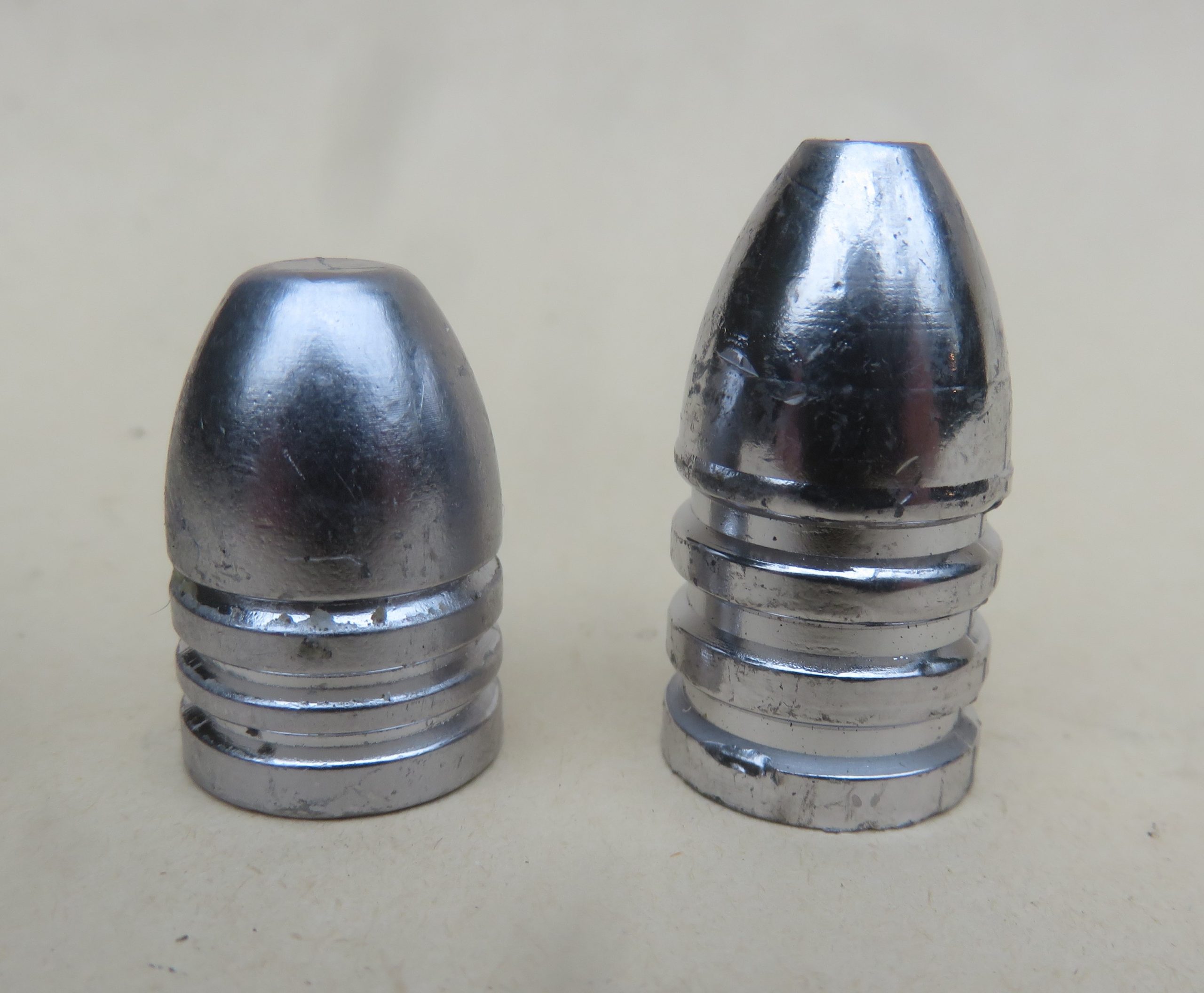
The 375-grain bullet is on the left with the 450-grain .50-70 bullet to the right.
Back to the .50-70 Springfield, a second try with the 375-grain bullets was made using a powder charge of 65 grains of Swiss 1Fg powder. That slower powder, and using 5 grains less of it, produced a velocity of 1300 feet per second. That was certainly more like the velocity that I was after but either the rifle or myself, or both, were not up to shooting a good target that day.
Speaking about accuracy, or the lack of it, closer inspection of this 1869 Springfield’s barrel, after cleaning it several times following the shooting that’s been done, shows that it might never be capable of shooting well again. There are some areas in the bore that are certainly damaged by corrosion. Those can be felt with the rod while cleaning is being done. This includes corrosion at the worse place, just below the muzzle. So, while I actually can’t expect to get really good accuracy from this old rifle, I will still try.
The barrel might get more attention, perhaps with some light abrasion on those rough spots. Giving the corroded areas at least a once-over can’t hurt anything.
The trapdoor Springfields have gotten into my blood. There is another one in the works at this time, using an old receiver and lock but with a new heavy barrel. It will be similar to some of the old Springfields that were sporterized years ago. That should be a real shooter and it will be in the “Gemmer” style. It will look like a Hawken muzzleloader, ramrod and all, but still a .50-70 breechloader. Let me get that one finished before I tell you more.
For now, I’m going to try more shooting with this .50-70 Springfield and that will be done with bullets from Lyman’s mold #515141, the copy of the original “Army” bullet for the old .50-70. I am hoping for the best which, in this case, will simply be an improvement. Where I’m going with this old Springfield might be a good question because I doubt that it will be capable of even “tin can” accuracy. Then, why bother? I’m just doing the shooting with this old rifle because I want to. And if giving the gun’s barrel some attention will help, I’ll be delighted. Once that is done, and this old .50-70 is shot with the bullets from the Lyman mold, I hope to have another story to tell.



